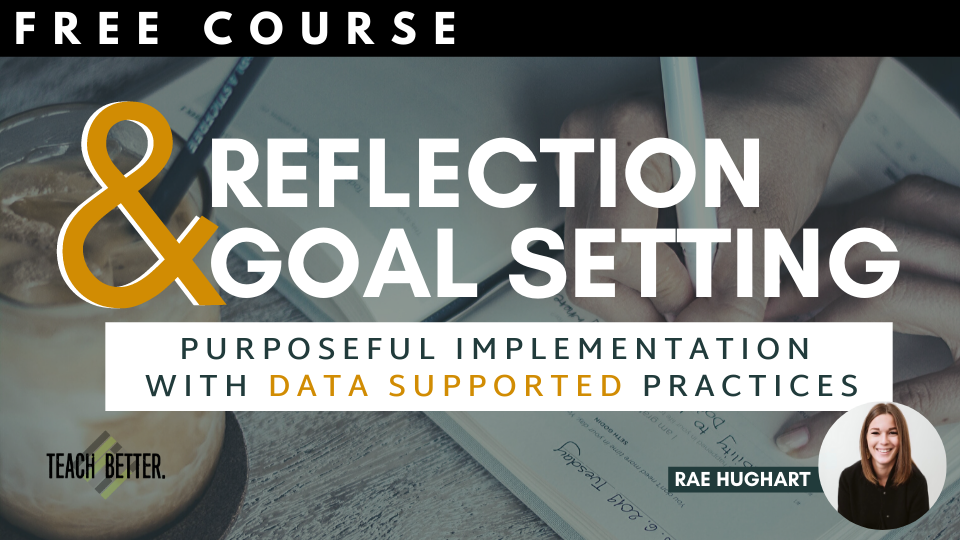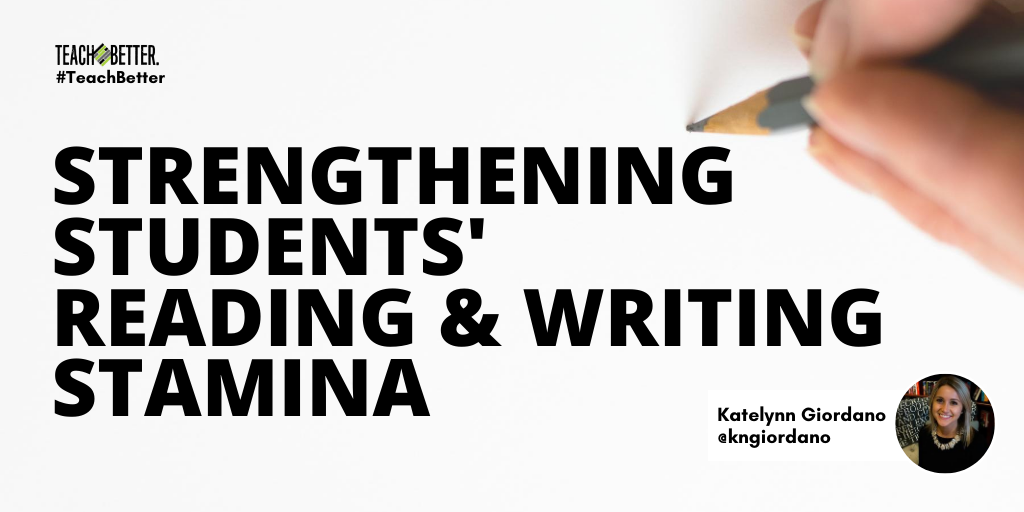TL;DR:
- Giving students time to read and write independently is a classroom routine that encourages students to become readers and writers.
- A book review script that students can use to share video book recommendations with peers is included.
- When students share their writing with an authentic audience, it empowers them and builds classroom community.
- Having students set their own reading and writing goals helps them buy in to reading and writing time.
Reading and writing are cornerstones of any classroom, but in language arts classes like mine, they are the classroom. In a typical year, I introduce our daily agenda to students right off the bat. We start every single class with 15-20 minutes of reading, and we write every single day. On Fridays, we really hone in on the writing aspect with our Free Write Fridays.
I’ve had countless conversations about the value of setting aside time for this independent reading and writing time. Without going off on a tangent, I’ll say this: Taking that time is 100% worth it.
However, as I begin to plan for the coming school year, it is anything but typical. Like many other educators, I am navigating an entirely new way of teaching. Some of us are going back in person, some are starting the year remotely, and some are using a hybrid model. And as we consider these structures, incorporating that time to build reading and writing stamina poses a new, unique challenge.
Value the reading and writing time.
There are so many benefits in setting aside this reading and writing time, but the greatest of them is the sheer number of additional minutes students spend engaged in these activities. Reading more and writing more builds their stamina, but it also provides time to practice skills and strategies taught during class time.
I make it clear that I am not here to teach them to be people who read and write, but that I am here to teach them to be readers and writers. And let me assure you, those are two very different things. Click To TweetBeyond that, it also shows students that spending time doing these things is valuable. In my class, we refer to it as ‘sacred’ time because we never skip it. This shows my students that this is a priority, which helps shift their mindset about doing it in the first place.
As we consider our remote, in person, or hybrid teaching models, it’s important to ensure that we are still encouraging our students to read and write. The way we do that, however, might look a little different.
If you are teaching remotely or in a hybrid model, you may not see your class every day. Justifying the time spent on free reading or writing can get a little stickier.
One argument? Do it anyway. It’s good for kids, it helps them grow as readers and writers, and it builds their stamina. All benefits, so it’s worth it.
But if you just can’t get to that place or you are not supposed to for whatever reason, there are ways to encourage time spent.
Set individual reading or writing goals.
Take time to set some goals that are personal for each of your students. For reading, students might want to read a certain number of pages or books. You could go further and encourage students to set goals for different genres, new authors, or even more challenging titles. Either way, this goal needs to be determined by the student so they are invested in it. It should be theirs.
For writing, students should still own the goal. But it could be to write in a particular genre, hit a certain number of pages, or even to just finish a piece! (I know that would certainly be my goal.)
If you are going to use these goals to help hold students accountable for daily reading and writing, have some kind of check in. It could be a quick conference, a Google form, or a digital portfolio. In addition to the check in, make sure you include a student ‘tracking’ component. We all know how motivating it can be to see our own progress, so use that same logic for students!
Have a book tracking page, create a digital or paper writing notebook, show them how to use a timer…anything that will allow students to concretely see how they are progressing towards their end goal. I’ve been considering the use of Goodreads accounts, with parent permission, so students can see the shelf of books they’ve read, keep track of what they want to read, and get suggestions for what to read next.
Encourage them to share their reading and writing with the class community.
One of my favorite parts about our daily reading and writing time is the sense of community it builds. Book talks, peer shares, and conversations about their reading and writing lives are hallmarks of our class. It’s something that motivates my students to engage in the activity. And, what’s more, it contributes to the culture of our class.
Last year, I started using Flipgrid to do book reviews. I provided a book review script, and when a student would finish a book, they’d go record a review. This gave us an all-in-one hub full of books, and it allowed my 3 classes to connect with each other too. Students began referring to the book review Flipgrid when they wanted to find their next read. They talked to each other about books they had read, both in person and via Flipgrid responses.
After the success of our book review Flipgrid, I wanted to set up something similar for writing. So I had students set up Kidblog accounts (unfortunately, this is a paid resource now) to share their free writing with one another. It was awesome. They would write stories, publish them to the Kidblog, and then read one another’s. Students from all 3 of my classes would read each other’s work, comment on it, and even collaborate. The writing community was thriving!
When we went virtual, I was able to continue both communities. While setting them up is going to look different this year, the authentic audience they had on each platform helped them buy in to the independent reading and writing time like never before.
[scroll down to keep reading]
Set the tone early and revisit it often.
I am a huge fan of Pernille Ripp‘s “Who are you as a writer?” and “Who are you as a reader?” downloads. So much so, that they have become two of my first week activities every year.
Because I start with a personal reflection on reading and writing, it shows my students that I don’t just view these two areas as “subjects”. I make it clear that I am not here to teach them to be people who read and write, but that I am here to teach them to be readers and writers. And let me assure you, those are two very different things.
People who read only consume books they are assigned, and rarely even those. They only read content that they have to, and rarely does it impact them. Readers have vibrant reading lives. They explore new worlds and ideas through books, articles, magazines, audiobooks, and more. They have preferences and personalities and have been shaped by what they’ve read.
People who write do it in school. They view writing as a task, an exercise, or a chore. They do it because they have to and they follow all the rules. Writers see immense power in this form of expression. They see writing as a form of communication, an extension of their voice. Writers pen their ideas, hopes, dreams, and feelings so they can be curated or shared. They break the rules often and on purpose so they can better communicate their message.
If we want students to engage in reading and writing, we have to cultivate this type of growth and exploration. We have to set the tone for it early and revisit it often. I intend to have my students create a Google slides portfolio of who they are as a reader and writer. One of our first “assignments” will be to share what they love and hate about reading and writing, fully and honestly. And I will read each one.
Building reading and writing stamina comes down to one thing: your dedication to it. While it may look different this year, students deserve this independent time to explore. No matter how you set it up, make sure you do. The world needs more readers and writers, and far fewer people who read and write.
About Katelynn Giordano
Katelynn Giordano is a Middle Level Language Arts Educator in Illinois and Training & Development Specialist for the Teach Better Team. She writes on her blog, Curriculum Coffee, and for the Teachers on Fire magazine.
In 2019, Katelynn presented information on action research in the classroom with a team at the National Council of Teachers of English Convention in Baltimore.
Katelynn is a dynamic educator who is passionate about student voice and empowerment, promoting equity, and valuing teachers as professionals.
Katelynn is also a member of the Teach Better Speakers Network.



